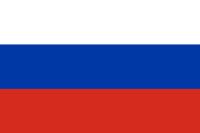
Venator Asia Sdn. Bhd. has Ceased Production. Who will Fill the Capacity Gap?
HZ info2025-09-24 14:45
Hz info,On September 13, 2025, Venator Asia Sdn. Bhd. announced the suspension of production. All ongoing and upcoming contracts, purchase orders, projects, deliveries, and services are suspended until further notice. This means that its 60000 tons/year titanium dioxide production capacity instantly drops to zero.
Europe, as a major disaster area of PanNengtou, was the first to fall. The bankruptcy of the Uerdingen factory in Germany was directly caused by the "liquidity depletion" resulting from the bankruptcy of the British parent company. In the UK, three core companies including Venator Materials plc have been listed for sale. In May 2023, Pan Energy Technology had already applied for bankruptcy protection in the United States, attempting to survive through capital restructuring, but apparently failed to salvage the systemic sinking of its global business. From the United States to Europe, and then to Asia, PanNengtou's global operational network collapsed within two years.
PanNengtou was originally a subsidiary of Huntsman Group, mainly engaged in the production of Huntsman titanium dioxide and performance additives. At its peak, PanNengtou had an annual production capacity of 650000 tons of titanium dioxide, ranking third in the world, second only to Kemu and Teno. It operated 20 production facilities in 9 countries and sold its products to more than 110 countries and regions.
Debt and external environment are rapidly transforming and expanding. In 2022, although PanNengtou's revenue reached 2.173 billion US dollars, it suffered a huge loss of up to 181 million US dollars, with high fixed costs and debt interest rapidly eroding its profit margin.
The Russia-Ukraine conflict has led to a 3-10 fold increase in the price of natural gas in Europe. For energy consuming enterprises like Pan Energy Tinto, which have large chemical plants in Germany, the production cost has increased significantly. At the same time, the rise of China's titanium dioxide industry has dealt a fatal blow. With a complete industrial chain and the scale effect of technological progress, Chinese titanium dioxide has entered the global market with extremely high cost-effectiveness, especially in the European market. Even though the EU has imposed anti-dumping duties on Chinese related products, it has not effectively stopped this trend. The influx of Chinese products not only squeezes the market share of PanNengtou, but also puts it in a desperate situation in terms of price.
The 15% -50% tariffs imposed by the United States on the European Union severely restrict the circulation and profit margins of Pan Energy's products in the European market, causing it to lose its last possible safe haven. Under the multiple pressures of energy, cost, competition, and trade, the survival space of PanNengtou has been completely sealed off.
PanNeng Tuo's production capacity accounts for 6% of the global titanium dioxide production capacity, leaving a production capacity gap of 650000 tons that will undoubtedly be quickly filled by global players, including Chinese companies.
China is the world's largest producer of titanium dioxide, accounting for 40% of the total global production capacity. Chinese enterprises are the most direct and powerful main force in filling the gap left by PanNeng Tuo. Leading enterprises such as Longbai Group, CNNC Huayuan, Panzhihua Iron and Steel Vanadium Titanium have enormous production capacity and the flexibility to quickly adjust product structure and switch target markets. When there is a supply gap overseas, they can quickly organize the source of goods and fill the gap through exports.
In the European Union and other regions, the closure of PanNengtou has caused a substantial shortage of local supply. Its direct competition, such as Komu, will prioritize the benefits of local production capacity in Europe, which can serve high-end customers who are not price sensitive but highly demand supply chain stability and local production.
Russia, Ukraine, Saudi Arabia, and others may also take the opportunity to expand exports, especially in their surrounding markets. However, the capacity scale, product quality stability and logistics convenience of these regions cannot be compared with those of China's leading enterprises on the whole. In the short term, Chinese exports will become the absolute mainstay, and the export volume of Chinese enterprises will significantly increase, quickly filling the global market gap, especially in non-tariff barrier regions such as the Asia Pacific, Middle East, and Africa.
MORE HZinfo
- ASE CHINA 2025 | Interview with Fuming Chairman Liao Jinlin: Deepening Expertise in Adhesives, Exploring the Industry’s New Future
- According to Mr. Liao, Fuming seized this opportunity through both foresight and proactive strategy.
-
2025-09-24
- Limeijia Ceramic Sand Coating Gains Further Recognition, Helping Guangzhou Waijingmao Building Renew Its External Wall Appearance!
- Recently, leaders from Guangdong Yuemao Property and Guangzhou Water and Electricity Installation Engineering conducted an on-site inspection at Limeijia Coatings Factory
-
2025-09-24
- Venator Asia Sdn. Bhd. has Ceased Production. Who will Fill the Capacity Gap?
- On September 13, 2025, Venator Asia Sdn. Bhd. announced the suspension of production. All ongoing and upcoming contracts, purchase orders, projects, deliveries, and services are suspended until furthe
-
2025-09-24


 English
English 简体中文
简体中文 Русский
Русский إنجليزي
إنجليزي




